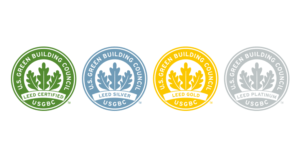Ensuring Safety and Comfort: Preventing Slip and Fall Accidents in Senior Living Bathing Areas
Empowering seniors with proactive measures and enhanced safety precautions.
As we age, it becomes increasingly important to maintain a safe and secure living environment. Falls are a significant risk that seniors face, and it’s a risk that senior care facilities must work to reduce. Among the potential fall hazards faced by seniors, slip and fall accidents in bathing areas are a significant concern.
 Wet surfaces, slippery floors, and limited mobility can all contribute to slips and falls, which can have serious health implications. However, senior living facility owners and developers are working with manufacturers in taking proactive measures to ensure the well-being of their residents and promote a worry-free bathing experience.
Wet surfaces, slippery floors, and limited mobility can all contribute to slips and falls, which can have serious health implications. However, senior living facility owners and developers are working with manufacturers in taking proactive measures to ensure the well-being of their residents and promote a worry-free bathing experience.
In this article, we’ll explore the steps being taken to prevent slip and fall accidents in senior living bathing areas, with a specific focus on showers and tubs. We aim to provide valuable insights, highlight the importance of a safe environment for seniors, and shed light on the statistics surrounding slip and fall accidents in senior living bathrooms.
The Alarming Statistics
According to the Centers for Disease Control and Prevention (CDC), falls are the leading cause of fatal and non-fatal injuries among older adults. The statistics surrounding falls are eye-opening:
- Each year, one in four adults aged 65 and older experience a fall, and falling once doubles the chances of falling again.
- Falls result in approximately 3 million emergency room visits among older adults annually.
- Two-thirds of senior living community residents fall each year, with 20-30% of these falls resulting in moderate to severe injuries.
- Bathroom-related falls are particularly common, accounting for 80% of all falls in senior living communities.
How to Prevent Slips and Falls in Bathrooms
Bathrooms are particularly high-risk areas for slip and fall accidents. Bathroom surfaces are often slick, which is exacerbated by the use of water in bathrooms. Additionally, bathroom surfaces are hard, meaning falls that do occur can be more severe.
Fortunately, there are multiple ways that senior living facilities can make bathrooms safer for residents and minimize the chance of falls.
Water Mitigation
Keeping water in the shower and out of the bathroom is the best way to prevent slipping. Senior care facilities can work with manufacturers, such as American Bath Group, who design shower units with features such as trench drains to ensure that water is appropriately channeled away.
Trench drains capture all of the water in the shower and keep it out of the bathroom, helping to eliminate water runoff. When designing the bathroom, the floor can be built so that it slopes back towards the trench drain. If water does get into the room, such as from a wet bather or wheelchair, the water flows back to the trench drain. This design can eliminate the need for a second bathroom drain outside of the shower area.
The Power of Non-Slip Surfaces
Non-slip flooring plays a vital role in preventing accidents. Non-slip surfaces provide improved traction, even when wet, significantly reducing the risk of slips and falls.
If at all possible, it’s best to install textured non-slip surfaces, rather than to rely on temporary traction solutions like non-slip mats. These temporary products can create multiple hazards, including mold, mildew, and bacteria growth; trip hazards; and accumulating soap residue. Residents may find the texture or feel of mats uncomfortable, leading to potential safety concerns.
Instead, choose a unit with built-in textured flooring, such as American Bath Group SureGrip bases. These bases deliver long-lasting non-slip traction without the downsides of temporary products.
Sturdy Grab Bars and Handrails
The installation of sturdy grab bars and handrails is essential in bathrooms. These assistive devices offer residents support and stability while maneuvering in and out of showers or using other bathroom amenities. By providing a reliable grip, grab bars and handrails significantly reduce the risk of falls.
The ADA and more stringent codes, like ICC A117.1, offer specifications on grab bar locations and counts.
Accessible Showers and Tubs
Senior living communities prioritize accessibility by installing low threshold or barrier-free showers. With barrier-free options, no ramps are needed for wheelchair-bound patients, and trip hazards are eliminated. These features eliminate the need to step over high ledges, making bathing safer and more convenient for seniors with limited mobility.
One-piece acrylx units are far easier to install than job-built tile units. Plumbers can install one-piece acrylx units in an hour or less, while tile units take five or more days to install. This streamlined installation reduces costs and makes it easier to adhere to project deadlines.
When choosing an accessible shower, make sure that it complies with ADA and ICC codes. It’s also important to work with manufacturers who can configure shower units with accessories, grab bars, and seats that meet requirements and contribute to the overall safety of the space.
Preventing Slip and Fall Accidents in Bathrooms
Slip and fall accidents in senior living bathrooms are a significant concern, as they can result in severe injuries and have long-lasting consequences. However, manufacturers like American Bath Group are dedicated to mitigating these risks and ensuring senior safety.
When planning your senior living bathroom, it’s important to work with a manufacturer that has a team with expertise in senior care safety and code compliance. You can find and reach out to one of those professionals today to get started.

Paige Cerulli is a contributing writer to i Advance Senior Care.
Related Articles
Topics: Design , Featured Articles , Housing , Risk Management , Senior Environments











